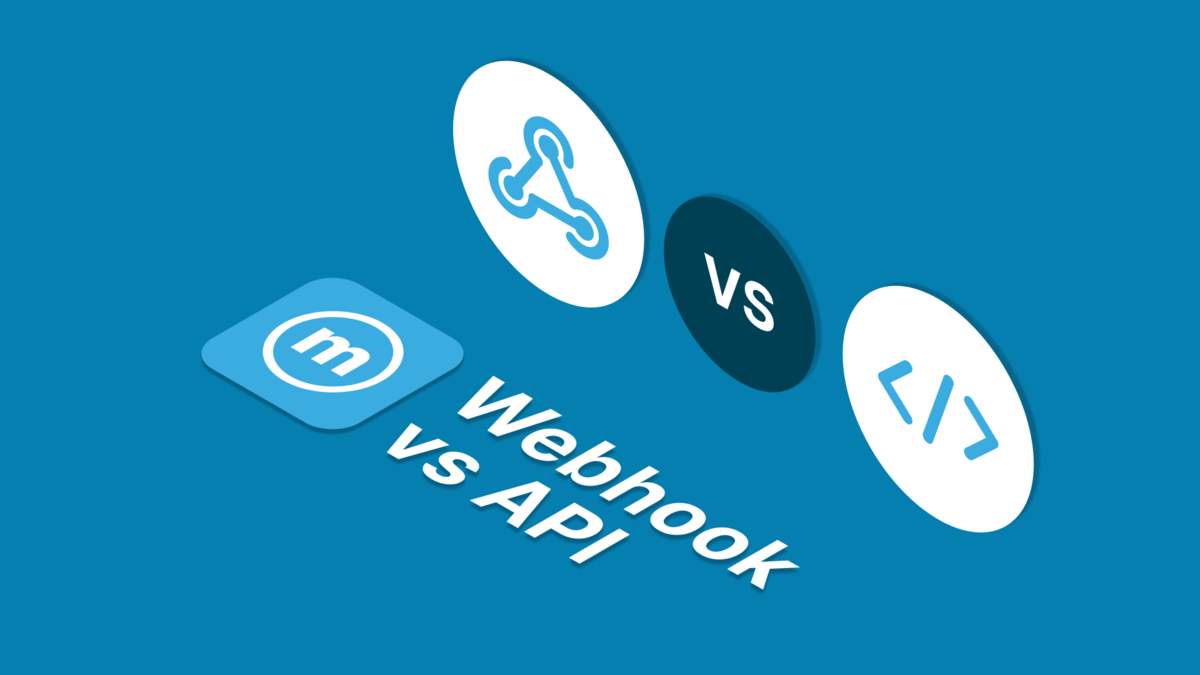Webhook vs. API: The difference and which one to use

If you are a developer who wants to integrate your email system with other web services, you might have heard of webhooks and APIs. But what are they, and how do they differ? And more importantly, which one should you use for your email project?
In this article, we will explain the basics of webhooks and APIs, their pros and cons, and how to use them with mailtarget, the email service for developers that offers Email API, SMTP Relay, and Email SDK.
What is a webhook?
A webhook is a way for a web service to send data to another web service when a specific event occurs. For example, when someone subscribes to your newsletter, fills out a form on your website, or makes a purchase on your online store, you can use a webhook to send an email confirmation or a thank you message.
A webhook works by registering a URL with the web service that triggers the event. This URL is called the webhook endpoint, and it points to a script on your server that can handle the data sent by the webhook. When the event occurs, the web service makes an HTTP POST request to the webhook endpoint with the data in the body of the request.
The advantage of using webhooks is that they provide real-time data and notifications without polling or waiting for a response from the server. They are also easy to set up and use, as you only need to provide a URL and write a script to handle the data.
The disadvantage of using webhooks is that they depend on the availability and reliability of both the web service that sends the data and your server that receives it. If either one is down or slow, you might miss or delay some data. Also, webhooks are not very flexible or customizable, as you can only receive the data that the web service decides to send you.

What is an API?
An API stands for Application Programming Interface, and it is a way for a web service to expose its functionality and data to other web services. For example, if you want to get information about a user's profile, send an email, or update a record in a database, you can use an API to communicate with the web service that provides these features.
An API works by defining a set of rules and protocols for requesting and receiving data from the web service. These rules include the URL, method, parameters, headers, and body of the request, as well as the format, structure, and status code of the response. The most common type of API used on the web is RESTful API, which follows the principles of Representational State Transfer (REST).
The advantage of using APIs is that they enable you to access and manipulate data from any web service that offers an API. They are also more flexible and customizable than webhooks, as you can choose what data to request and how to process it.
The disadvantage of using APIs is that they require more coding and configuration than webhooks. You also need to handle authentication, authorization, error handling, rate limiting, caching, and other aspects of working with APIs. Additionally, APIs are not very efficient for real-time data or events, as you need to poll or refresh the data periodically.
How to use webhooks and APIs with mailtarget?
mailtarget is an email service for developers that offers Email API, SMTP Relay, and Email SDK. You can use mailtarget to send transactional and marketing emails from your website or app with ease and reliability.
mailtarget also supports both webhooks and APIs for integrating your email system with other web services. You can use mailtarget's Email API to send emails programmatically from your code using any programming language or framework. You can also use mailtarget's Webhook feature to receive real-time information about your email campaigns, such as delivery status, opens, clicks, bounces, unsubscribes, and more.
Some of the benefits of using mailtarget’s Webhook feature are:
- You can get instant feedback and analytics on your email campaigns.
- You can improve your email deliverability and engagement by optimizing your email content and timing.
- You can automate your email workflows and processes by integrating with other web services.
- You can customize your email experience and interactions with your users based on their behavior and preferences.
To use mailtarget's Email API, you need to sign up for an account and get your API key. You can then use mailtarget's documentation to learn how to send emails using various parameters and options. You can also use mailtarget's sandbox environment to test your email projects without sending any actual emails.
To use mailtarget's Webhook feature, you need to create a webhook endpoint on your server that can handle the data sent by mailtarget. You can then register your webhook endpoint URL with mailtarget in your dashboard settings. You can also choose which events you want to receive notifications for.
Whether you use webhooks or APIs for your email system, mailtarget can help you achieve your email goals with ease and efficiency. You can sign up for a free account and try the sandbox environment to see how mailtarget works. When you are satisfied, you can switch to the production environment and run your email projects live.
Webhooks and APIs are two powerful ways to integrate your email system with other web services. By understanding the difference between them and how to use them with mailtarget, you can choose the best option for your email project and deliver amazing email experiences to your users.
(A.F)

